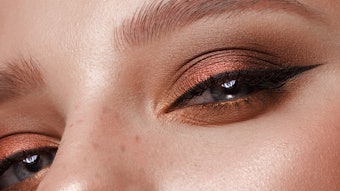
Abstract: With the popularity of facial fillers increasing exponentially in the United States, the incidence of filler complications also is on the rise. This has led to the necessity for medical aesthetic physicians to have tried-and-true protocols they can turn to for the treatment of filler complications, including impending necrosis and hypersensitivity reactions.
Filler treatments are the second most commonly performed nonsurgical cosmetic procedure in the United States. Since the U.S. Food and Drug Administration approval of hyaluronic acid for cosmetic use in 2003, its popularity has skyrocketed with more than 1.3 million treatments performed last year in the United States alone.1
The ability to quickly, safely and efficiently volumize and shape an aged or disproportionate face has revolutionized the way cosmetic medicine is perceived and delivered, and it likely will continue to positively influence the way physicians think about and practice cosmetic medicine. However, along with its rise in popularity, there has been an increase in the amount of physician and non-physician providers with varying backgrounds and experience performing the treatments.
For this reason, not surprisingly, more complications are being noted. Pain, ecchymoses and edema are expected sequelae, and experience has taught that pain can be mitigated with the addition of lidocaine. Edema and ecchymoses can be reduced with slower injections, reduced product viscosity and blunt-tip cannulas. However, two concerning complications that are still yet to completely be understood are impending necrosis and hypersensitivity reactions. If cosmetic physicians and medical aesthetic professionals can better appreciate the etiologies of these complications, perhaps they can be prevented. If there can be a consensus on the best treatment course, physicians will be more prepared and confident when they present, which will ultimately lead to safer training protocols and better patient outcomes.
Impending necrosis
Impending necrosis seems to occur following an inadvertent intravascular injection or from pressure necrosis following an injection into a vascular watershed area, such as in the glabellar area. After years of filler experience including both research trials and clinical practice, I have developed protocols for managing these untoward outcomes with success.
My current protocol for treating impending necrosis includes:
- Hyaluronidase (Vitrasea), 10–30 units diluted 1:1 with saline, at the first recognition of vascular compromise, regardless of the filler used.
- Nitropaste, such as Nitro-Bidb (nitroglycerin ointment, 2%), applied to the affected area, with the amount dependent on the size and area of the impending necrosis.
- Aspirin, 325 mg each day.
- Warm compresses and massage.
- Topical Dermacytec, an oxygen cosmeceutical applied to the affected area q.i.d.
- See the patient daily. If there is no improvement, repeat the regimen and add a Medrold dose pack.
Hypersensitivity reactions—immunogenic or infectious?
After a recent trip abroad, I discovered many Asian and European medical aesthetic physicians are familiar with low-grade, locally persistent infectious complications following permanent filler treatments secondary to biofilms. Biofilms are complex communities where bacteria live and survive with little energy expended. Characteristics of biofilms include the secretion of an extracellular matrix, walling the biofilms off from the outside; living in clusters; irreversibly attaching themselves to a living or inert surface; reduced metabolism; changing their DNA; being highly resistant to antibiotics; and often being culture negative.
Biofilms may cause sepsis, which can be successfully treated, but then they may serve as a reservoir for further infections. The infections can get worse and progress with steroid and NSAID treatments. Biofilms are commonly linked with endocarditis, in-dwelling catheters, contact lens cases and solid implants. While there are no known confirmed biofilm reactions reported with the non-permanent fillers that are approved in the United States, they have been confirmed with fluorescent in situ hybridization (FISH) analysis following permanent filler treatments common in Europe and Asia.
Up to now, the perception has been that hypersensitivity reactions following filler treatments are immunogenic in nature. However, after reviewing all the non-permanent filler hypersensitivity reactions reported, a pattern suggesting an infectious origin emerges. Additionally, after reviewing cases of hypersensitivity reactions, they all seem to follow a pattern of infectious rather than allergic. Recently, I successfully treated four patients referred to me with persistent induration and erythema months after a filler treatment. While this is not confirmation of a biofilm reaction, the success I had with new hypersensitivity treatment protocols prompted me to share this information and help initiate a conversation among aesthetic physicians on the topic.
To prevent infectious complications, I use this protocol:
- Cleanse the face thoroughly of all makeup before injection.
- Use a benzalkonium chloride wash or betadine swab to prepare the face just before the treatment.
- Use as few injection sites as possible.
- Avoid bolus injections.
- Avoid injecting into previously placed fillers or through infected tissue.
- Also avoid injecting through oral or nasal mucosa.
- Consider using prophylactic antibiotics before a dental procedure or if a facial infection occurs within two weeks of a filler treatment.
If a red, indurated area appears any time after the treatment, regardless of duration:
- Inject hyaluronidase (Vitrasea), 15–30 units mixed 1:1 with saline, regardless of the filler used.
- Start antibiotics, such as Ciproe 500 mg q.d. and Biaxin XLf 500 b.i.d., for up to six weeks.
- Avoid all forms of steroids or NSAIDS.
If it is a long-term indurated area or steroids have already been used:
- Inject 5FU (fluorouracil injection) up to 50 mg/mL, up to 0.5 cc.
- Repeat every four weeks.
If induration persists despite 5FU treatment:
- Consider laser lysis.2
- Next, consider an incision and washing out the cavity with antibiotics.
- Use surgical excision as a last resort.
While there has not been a single report of biofilm reactions following non-permanent filler treatments in the United States, this is my most recent protocol for treating hypersensitivity reactions and infectious complications following any filler treatment.
Understanding is key
Understanding the etiologies of these complications is imperative to a cosmetic physician’s fiduciary responsibility. As the number of both injections and injectors is steadily increasing, it is important that the industry comes to a consensus on the best course for treating complications associated with fillers, namely impeding necrosis and hypersensitivity reactions. Understanding the possibility of an infection’s cause to hypersensitivity reactions can allow for the proper treatment course and better patient outcomes, which ultimately means more satisfied patients and better business.
REFERENCES
1. https://www.theaestheticsociety.org/ (Accessed Jul 30, 2010)
2. D Cassuto, et al. Advanced laser techniques for filler-induced complications, Dermatol Surg, 35 Suppl 2 1689–1695 (Oct 2009)
FOOTNOTES
a. Vitrase is a registered trade name of ISTA Pharmaceuticals, Inc., Irvine, California.
b. Nitro-Bid is a registered trade name of E. Fougera & Co., Melville, New York.
c. Dermacyte is a registered trade name of Oxygen Biotherapeutics, Inc., Durham, North Carolina.
d. Medrol is a registered trade name of Pfizer Inc., New York.
e. Cipro is a registered trade name of Bayer AG, Leverkusen, Germany.
f. Biaxin XL is a registered trade name of Abbott Laboratories, Abbott Park, Illinois.










